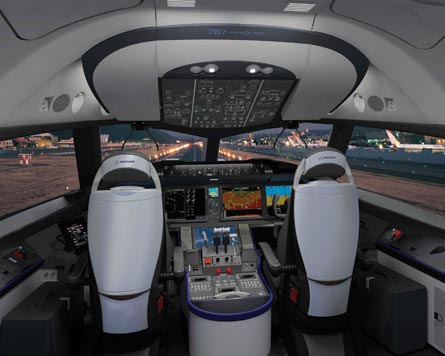A few years ago, when electronic flight bags were still relatively new, the difference in approach by Airbus and Boeing looked more significant than it does today.
It is no longer conceivable that a new airliner would be rolled off the production line without either an embedded EFB or an EFB dock, because available software from numerous suppliers now enables modern cockpit operations to be completely paperless.
The other change is the relentless process of integrating the avionics systems, which is blurring the division between some of the functions of the flight management system and the EFB.
|
|---|
Boeing has gone down the road of embedding Class 3 EFBs in the aircraft, whereas Airbus has elected to standardise on a laptop Class 2 system - which it calls Class 2-plus - with a docking station. Boeing argues that the embedded EFB system enables more integration because it is more secure against bugs, Airbus that the laptop-based system is more flexible and more future-proof.
In a Class 3 system the crew can carry out the performance calculations and load them directly into the FMS, whereas the Airbus crew, at present, derives the performance figures on the EFB and manually enters them in the FMS.
With today's aircraft so completely computerised, understanding where the FMS/EFB division occurs is still best achieved by recalling what pilots used to carry in their leather flight bags: paper charts and various categories of information about the aircraft and its systems, its operation, and its environment.
The latter is still what the EFB does, but the charts are usually electronic, not PDF files, making it possible to animate the chart, making it like a detailed navigation display.
A function like that has long been offered by Boeing/Jeppesen in its EFB-embedded airport surface navigation display: the crew can see their position on a chart-like display. But that could equally become an FMS function.
The EFB future capability situation is comparable with the ground-based market in home and business computing: advances in software and hardware are so rapid that it is difficult to predict what desirable options may become available more than two years into the future.
Airbus's claim that its EFB solution may be more future-proof may sound attractive in that light, but Boeing has always known it will have to upgrade its information system over the long life of an aircraft, and if the divide between aircraft-generated information and data from the outside world eventually disappears into a totally integrated flight information system, these differences of style will have even less significance.
Source: Flight International
























